
Chapter 17
Managing the Change
In This Chapter
▶ Understanding the change process
▶ Coping with resistance to change
▶ Planning the transition
▶ Meeting with resistance to change
▶ Designing training for change
In this chapter, we will move from understanding culture to changing it. Many years ago, I headed up a difficult project intended to produce a great change in my organization. From a technical viewpoint, the end result would have been an incredible advancement. I also truly believed, based on my knowledge of our business and people, that the people affected would immediately see the many benefits for them. After several years, the project was canceled. The cover story was that the funds were more urgently needed elsewhere. The true story was that we’d bungled the change management process.
Our approach had been to give a limited number of briefings well after the work had begun. We didn’t enlist anyone’s support up front. We never asked the people in the organization if they thought it would be an improvement. We believed that all we had to do was to explain it rationally a few times, and people would fall over themselves to support us. Instead, they shrieked bloody murder. End of funding and end of project. The painful lesson learned for me was that managing change is as important as doing the right thing in the right way.

Know These
A change agent is someone who is responsible for planning and implementing a change. Knowledge of the basics of organizational culture, knowledge of the specific culture, and knowledge about the discipline of change management are critical. Actual experience is even better.
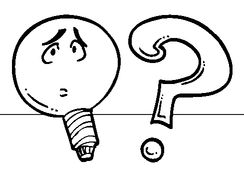
Know How
One way to help visualize the future state is by holding a fake press conference. Pretend that it is your end date, and you’re briefing the press (with delight, that is). Explain what your goals and vision were when you started. Report what you did to accomplish them. Talk about how wonderful things are now. Stage it to make it as real as you can.
No matter what kind of knowledge management effort you introduce, you’ll be asking people to change the way they work. For better or worse, if you’re in the knowledge management business you’re also in the change management business. (I hope you’re keeping a list of all of your new occupations. This one is change agent.) In this chapter, we’ll discuss some basics of change management. However, we’ll leave communications, one of the most important areas, for the next chapter.
The Change Process
If you’re going to be a change agent and manage change, you need a way to frame it as a process and break it down into doable parts. In classical change management we divide the process of change into three stages: the future state, the current state, and the transition state.
The Future State
You’ve already developed your vision, defined your goals, and linked what you plan to do to the organizational strategy. But now you should revisit these decisions and dreams. Developing these areas is an iterative process. However, one thing you probably haven’t done yet is decide when you plan to get there. Pick an approximate date you expect to finish, even if it seems like a stab in the dark.
You’ll probably need to adjust the date later, but it’s best to start with a clear end date for the change you want to implement. Having a deadline creates a sense of urgency, which is incredible motivation for action. On a more pragmatic level, it also tells you how much time you have.
You also may need to establish some midpoints during the process. Big change is a long-term business. If you want to make big changes, plan on being in the change management business for years—but that’s too long to go without getting anywhere. Give yourself some signposts along the way to let you know you’re still on course.
If you have planned the process in phases, your phases should give you some idea of what your midpoints during the overall process are. If nothing else, the end of each phase is a distinct milestone.
There is also the equivalent of the television network sweeps: submission of your annual budget. This time can provide a distinct (and anxious) midpoint. Somehow the process of justifying your continued existence spurs you to show some accomplishments and make some assessments. A friend once told me nervously that this was the year their program had to show solid gains. It also was the first year they had been required to justify their budget to a new chief.
Putting the future state first isn’t a mistake. First of all, it points you in the right direction. That can stop you from bogging down in the details of the here and now. It is tempting to fight the current fires. They’re serious and they demand your attention . Also, it is more encouraging. Defining a bright future gives you something to look forward to. In contrast, focusing on how things are now may be enough to make you quit, overwhelmed by the magnitude of the problems. Most important of all, it makes you narrow your focus to your goals and vision.

Know These
In change management, a future state is the finish line. It is what “done” looks like.
The current state is the way things are right now. It’s the “what is.”
The transition state is the stage in between the current state and the future state. It is the journey that ends with reaching your goals and vision.
The Current State
The current state is the here and now, how things actually are.
▶ How do we describe the current state?
▶ What are the internal and external pressures?
▶ Why is there a need for change?
▶ Do we want to change?
▶ What needs to be changed to accomplish our vision and goals?
▶ What are our priorities for change?
▶ How ready are we for change?
From an emotional viewpoint, the current state seems cozy and safe. We can keep ticking along as we have been. (Can’t we?) Business as usual, we say. This reminds me of the scene in the Disney cartoon The Sorcerer’s Apprentice, when the marching brooms keep bringing in buckets of water even as the water rises higher and higher. Things may be desperate, but we tend to keep on doing things as we have been.

Didn’t Know
There is some good news about the transition state. This is the time for creativity. You’ve realized that the current state is broken and needs fixing, you’ve rocked the boat, and you’ve made this a time that changes are supposed to happen.
Encourage innovation as much as you can. Give people a chance to add their own creative ideas. Establish that this is the time to experiment. Ask for additional solutions. Accept challenges from people as an opportunity to question assumptions. Above all, resist the urge to move to closure too quickly. You may never have this kind of freedom and elbowroom again. Slow down, even though being in transition is uncomfortable.
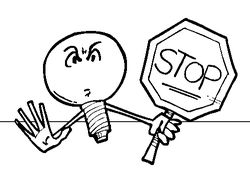
Know Nos
Don’t dismiss people’s emotions during the transition state. You must be attuned to how people feel; no matter how groundless you think those feelings are, they’re still valid to the people who feel them. The stress induced by the change reduces people’s ability to adapt. The bigger the change, the more stress. The more stressed they are, the less they will be able to learn and adapt.
The Transition State
The transition state is that uneasy stage where things are changing, but we haven’t gotten to where we plan to wind up yet. We are on the move. It is darned uncomfortable. What you have done is taken a (more or less) stable system and deliberately destabilized it.
Resistance to Change
I, for one, freeze up when someone says brightly to me that something is going to be different. I can feel my blood pressure going up. It doesn’t matter how good the end result should be—all change is stressful, even when it’s for a good reason.
I’m not alone in reacting negatively to the word “different.” Resistance to change is human nature. You have to expect some resistance, although you’ll do your best to minimize it.
Consider yourself lucky if the resistance is in the open. If someone stops you in the hall and argues with you, you’ve got the chance to discuss it. If you’re attacked in meetings, that puts the issues people care about on the table. Public resistance gives you the opportunity to both air grievances and talk about them. Keep in mind, however, that you won’t be able to resolve all of the issues. Encourage people to resist openly but constructively. You then can learn and improve what you’re doing based on the feedback.
What scares me is underground resistance—the sneaky, behind-your-back stuff. People breeze by you in the hall, sniffing disdainfully. They don’t show up to meetings. Work that was supposed to get done doesn’t. What you have is a time bomb waiting to go off, but you have no idea of its size. It could be a big bomb. It could be a little bomb, like endless griping. And you don’t know when it will go off.

Didn’t Know
A possible covert reaction to change is sabotage. When I was a young soldier I was told that my Army unit was getting new technology that would drastically change the way we worked. I was relieved that a sister unit would get it first, figuring they’d work out the bugs. But we soon heard that it had been a complete disaster and a grim-faced bunch of people showed up at our unit to implement the new technology. They admitted they had flubbed the change management and discussed candidly how people in the other unit had deliberately sabotaged the new technology. They asked the middle managers to make it work—and they did. We all did.
However, if you handle it right, most people will get past their resistance and accept change. Just don’t expect everyone to change at the same time. People adjust to change according to their own schedule, not yours. At any given time, you’ll have people in different stages of adjustment; some delightful people will adapt quickly, racing out of the gate, while others will amble out. Some diehards will opt out permanently, refusing to move at all.
A Road Map for the Journey
You as the leader will need a road map. Lay out a detailed activity plan showing the following:
▶ What exactly will happen
▶ What the sequence of activities is
▶ When the activities will happen
▶ How the activities are linked to your goals
▶ How you will get feedback
▶ What the milestones are
▶ How you will measure progress
Any organization is a system. If you tinker with one part of a system, things can happen to other parts that you didn’t intend. One unintended consequence to expect during a transition is that problems you thought had been solved a long time ago reappear. Or something you thought was on the mend suddenly regresses. Weak points also will break under the strain of the change. Be prepared to cope with leaks sprouting all over the organizational dyke.
How Big Is the Change?
Another important task when planning the transition is to get a handle on the size of the change. Are you asking people to staple their documents along the right top corner as opposed to the top left corner? Or are you asking for a more significant and broader change? The bigger the change, the more potential resistance there is and the more effort required to manage the change. Some questions to consider include the following:
▶ How much of a change are you trying to make in the way people do their work?
▶ How much of their work will it affect?
▶ Will it require new processes?
▶ How different is it from the way they are working now?
▶ Will it require new information technology?
▶ Will it require new equipment?
▶ Will it require new behaviors?
▶ Will it require new skills?
▶ Will it require them to work with new people?
▶ How will people feel about it?
You also have to identify how much of the organization you will be working with. If you’re starting with a pilot in one section or unit, your scope is relatively limited. The rule of thumb is that the more people, sections, geographies, and functions you have, the more work you have to do, not to mention how many more resources you will need. It’s a matter of scale.
Who’s for You? Who’s Against You?
Spell out who exactly is going to be affected. Some of these will be groups. Some will be individuals. All of them are your stakeholders. This is your target population (or, if you prefer, your customers). The stakeholder analysis will be the foundation for other work you’ll be doing, like designing communications and training for particular groups and individuals. In an article on change management titled “Change Management: A Base For Knowledge Sharing,” Knowledge Management Review, vol. 3, issue 4, September/October 2000, Chuck Seeley, manager, Technology Manufacturing Group Knowledge Management, Intel Corporation, identified the following stakeholders:
▶ The people in the center of the target for the change. These people at ground zero will have to change what they do or how they behave.
▶ The people planning and carrying out the change. This includes support staff, both inside and outside any knowledge management group. These are all change agents.
▶ The people sponsoring the change. This could be anyone with sufficient clout, but sponsors usually are found in management.
▶ Management, to include layers above and below everyone else who is involved.
▶ People who are external, like customers, suppliers, and alliance partners.

Know How
You’re not the authority on how big the change is. The people being affected are. Their perceptions are the reality with which you must deal. If handled well, a big change can be perceived as nothing much, just a ripple in the organizational waters. A small change, if bungled, can set off a tidal wave of resistance.

Didn’t Know
Being a sponsor requires a significant commitment. In addition to providing clout, a sponsor should play both a public and a private role to consistently support the change. The sponsor also should monitor progress and any bumps in the road. Also, the sponsor ensures that there is follow-up. Make sure your sponsor has enough time to do all of this—and has a deep commitment to the process.
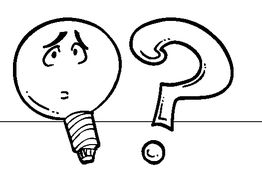
Know How
Look for both formal and informal leaders. Formal leaders are easy, but spotting the informal leaders can be tricky. Some may be technical people who are respected for their expertise. Other may be leaders because of their seniority or because they’re well connected. No matter where and who they are, their perceived leadership makes them people that others look to for a cue.
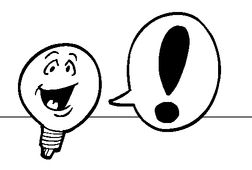
Didn’t Know
One way to deal with prominent resisters is to marginalize them. Give them something trivial but seemingly important to do on the sidelines. Or you can take the opposite tack and give them leadership of a significant piece of the effort, forcing them to deal with their resistance in a positive way. At that point, their success is tied to the success of the change effort.
We put these groups into the following categories:
▶ Supporters
▶ Opponents
▶ Neutrals
As you do that, think about the consequences of a person being a supporter, an opponent, or a neutral. Depending upon the person or group, any of these could be tolerable. You can’t convince everybody. Trying to turn around strong resisters sometimes reminds me of the adage that it’s no use arguing with a greased pig. The pig likes it, and you get dirty. If you can, it’s best to concentrate your limited time where it is most useful.
However, sometimes you don’t have a good choice. The group that worries me the most is the one whose support is critical but who are opponents. If you can’t change their thinking to either neutral or supporting, you may be dead in the water. I don’t have any easy fixes for that situation, but you’re better off figuring out if you’re in that fix.
Neutral also can be disastrous, depending upon who’s neutral. There are some people who, if they’re viewed as neutral, can prove fatal for the change. For example, if a key and respected leader in your organization does not get behind your efforts, it will send an unmistakable message that it’s okay to not take the changes seriously.
It also sends the message that the leadership of the organization isn’t really behind the change. Your pitch to sell the need for the change has been challenged publicly. And that leader has more credibility than you with his or her followers.
Learning the New Ropes
Part of the reason that people resist change is learning anxiety. If you’re being asked to do something you don’t know how to do and don’t understand why you need to do it, that’s a huge no-win situation for you. You zone out. Or you try to dodge the issue. Or you demand to know what’s in it for you.
As a change agent, the way to deal with this is to provide training. Look at your stakeholder analysis and determine what groups or individuals need training. Do this relatively soon in the change process. The longer you wait, the more resistance can build up as people worry and gripe.
Then start designing the training. Determine what these people need to know to understand the value of this change. In doing this, you need to cover three areas:
▶ Skills (the actual how-to’s of what they now need to know)
▶ New behaviors (what will be done)
▶ Necessary attitudes (why they should do it)
I’d start the training here, with why this new way of doing things is required. Obviously, there is room for improvement. Talk about waste, loss of market share, and obsolete technology, as well as the problems these cause. Turn on their motivation to change because they see it’s in their best interest. Then move onto how things are going to be better. The bottom line is that what you’re doing should make their work easier. Talk specifically about the payoff for them individually and for the organization.
Finally, explain how this is part of the big picture. This is the time to talk about your vision and goals, how they tie into the business strategy and the organization’s future.
In helping people gain new skills and behaviors, you need to make sure they have practice time, complete with coaching. For one thing, people learn best by practicing what they’re trying to learn. If people need to master a new process, let them try the process, not just read about it and take a test. You also need to coach and give them immediate feedback so they can correct any mistakes.
Another important reason to give training is that a classroom environment is a safe environment. People are supposed to not know what they’re doing. It’s okay for them to make mistakes and to experiment.
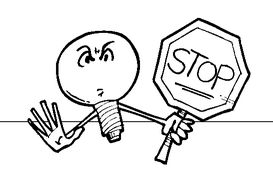
Know Nos
When you spell out the pain and the benefits, be as specific as you can. This isn’t the time for ambiguous platitudes. The more concrete you are, the more they can relate what you’re proposing to their interests. Not only does this help establish your credibility, it gives more motivation.

Know How
While you’re designing the training, involve the people who will be the students. They’re the best judges of how they want to learn. This goes back to one of the overriding principles of change management: Involve the users.
If you can, train an intact group, like a work group, all at the same time. Since you want to change the way people work, stick as close to the actual work as you can. People work in groups, so it’s less effective to train scattered individuals. You can’t focus on the group interaction if you have John on Tuesday, Julio on Wednesday, and Fredda on Friday. You also need to put together an overall training plan. This plan should include the following:
▶ The topics that the training will cover
▶ The delivery method for the training
▶ Who is delivering the training
▶ The facilities and equipment needed
▶ The date, time, and place
▶ The method of assessing whether students learned what they were supposed to learn
▶ A means of gaining feedback from the students
As always, involve the actual people as much as you can.
The Least You Need to Know
▶ Change can be described as a process with three parts: the future state, the current state, and the transition state. You need to manage each of these parts.
▶ Develop an activity plan for the transition state.
▶ Assess how big the potential change is and how many people will be affected by it.
▶ Analyze who your stakeholders are and how they feel about the change.
▶ Early in the change process, give people training on the new skills, behaviors, and attitudes they need.
..................Content has been hidden....................
You can't read the all page of ebook, please click here login for view all page.
